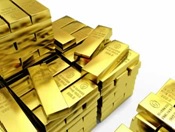Gold Demand in Q1 2016
 The World Gold Council published today a new edition of its quarterly report on gold demand. What does Gold Demand Trends Q1 2016 say about the demand for gold in the first quarter of 2016?
The World Gold Council published today a new edition of its quarterly report on gold demand. What does Gold Demand Trends Q1 2016 say about the demand for gold in the first quarter of 2016?
Unsurprisingly, the headline is positive as gold demand increased 21 percent. Actually, it was the strongest quarter in the gold market on record. Importantly, that surge was driven mainly by investments. Let’s dig deeper into the report.
Jewelry demand fell 27 percent from the previous quarter and 19 percent year-on-year. The decline clearly shows that the jewelry market is price sensitive. Surely, there were some market disruptions in India (strikes across the jewelry industry) and supply constraints in China (due to new requirements), but the main reason behind the drop in jewelry demand is the rise in gold prices. As we continuously repeat, consumers are price takers, not price setters, therefore they do not drive the price of gold, which is shaped by investment demand.
Indeed, gold investment more than doubled in the first quarter of 2016. Global investment demand shot up 122 percent to 617.6 tons. The jump was fueled by hefty ETF inflows, which surged to 363.7 tons. Importantly, these inflows came after a three-year period of almost uninterrupted outflows, which signals the positive shift in the sentiment. It is worth pointing out that the EFT inflows reached a seven-year high, due to uncertainty over negative interest rates, stock market volatility and global economic growth. The surge in ETF demand caused a 17-percent increase in the price of gold. This was the best performance in almost three decades, making the yellow metal one of the best-performing assets in the world in the first quarter of 2016. Although the trend continued into April, investors should be aware that inflows on such a scale may be unsustainable.
Let’s note at the end that central bank purchases fell 3 percent year-on-year, which means that central banks continued to build their holdings, but at a slower pace. Technology demand dropped three percent, so the long-term decline in gold used in technology continued. The total supply of gold grew five percent as the mine production increased eight percent, while recycled gold decreased one percent.
The take-home message is that the demand for gold surged 21 percent in the first quarter of 2016. The jump was driven mainly by investment demand and ETF inflows, which signals an important shift in the sentiment toward gold. The good news is that the positive trend continued into April. The bad news is that inflows on such a scale are unlikely to be sustained, as they started from a very low base. Moreover, investors should remember that these inflows were driven by price momentum, to a large extent, so any declines in the price of gold (or just lack of further upward movements) may deter some investors from the gold market and curb or even reverse the ETF inflows.
If you enjoyed the above analysis, we invite you to check out our other services. We focus on fundamental analysis in our monthly Market Overview reports and we provide daily Gold & Silver Trading Alerts with clear buy and sell signals. If you’re not ready to subscribe yet and are not on our mailing list yet, we urge you to join our gold newsletter today. It’s free and if you don’t like it, you can easily unsubscribe.
Disclaimer: Please note that the aim of the above analysis is to discuss the likely long-term impact of the featured phenomenon on the price of gold and this analysis does not indicate (nor does it aim to do so) whether gold is likely to move higher or lower in the short- or medium-term. In order to determine the latter, many additional factors need to be considered (i.e. sentiment, chart patterns, cycles, indicators, ratios, self-similar patterns and more) and we are taking them into account (and discussing the short- and medium-term outlook) in our trading alerts.
Arkadiusz Sieron
Sunshine Profits‘ Gold News Monitor and Market Overview Editor

















